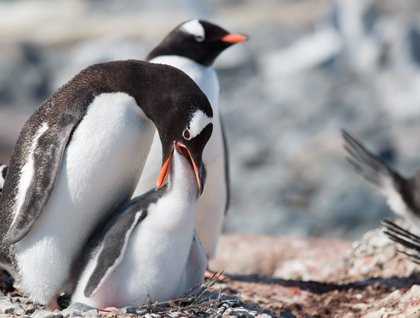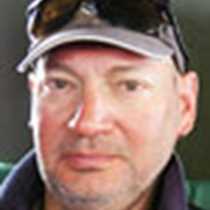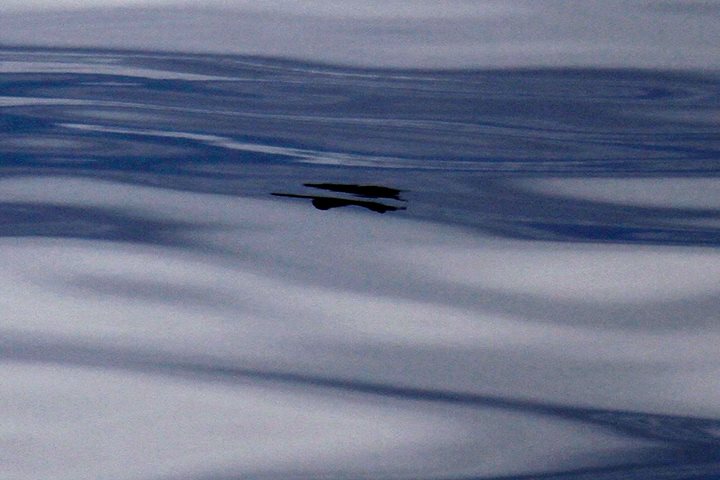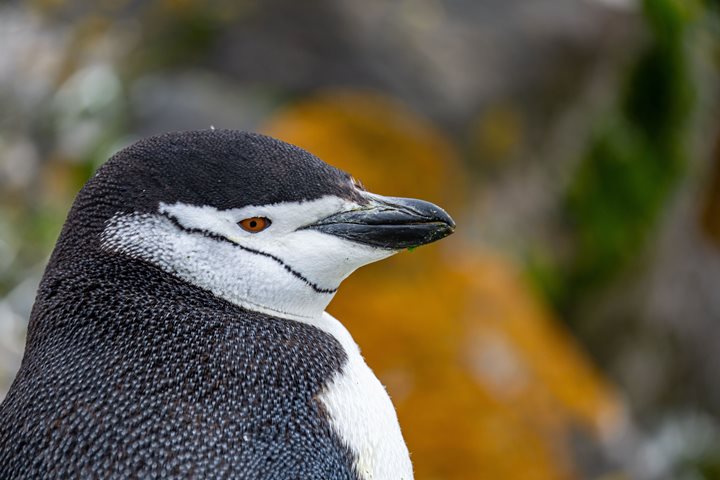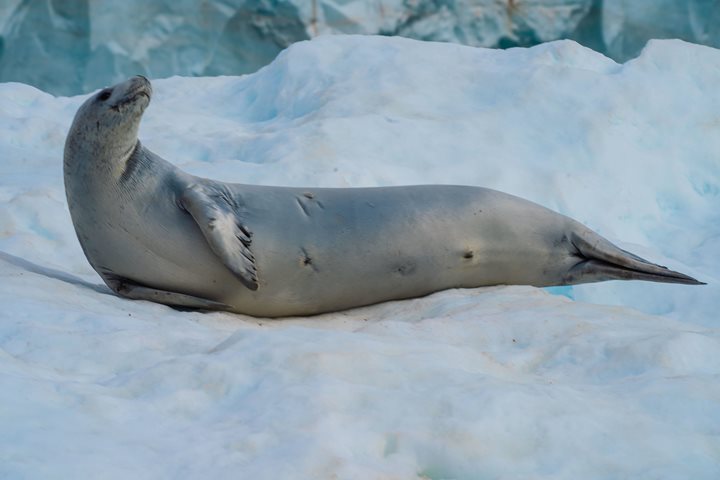Guests woke early to enjoy the splendor of the return journey through the Lemaire Channel en route to Port Lockroy and nearby Jougla Point. Thankfully the conditions were mild and windless with full sun.
At Jougla Point the Antarctic shags and gentoo penguins were well advanced in their breeding cycles. The shag chicks now appeared as large as the adults, although still covered in a beautiful grey down. Antarctic terns, brown skuas, and southern giant petrels were also sighted.
Port Lockroy on Goudier Island was named in 1904 by J. B. Charcot after one of the supporters of his during his Française expedition. Later, between 1911 and 1931 the port was used by whalers as it’s a sheltered haven where the adjacent glacier provided a reliable water source. Many whale bones remain on the beach at Jougla Point and the landing point at Port Lockroy is marked by a collection of mooring chains wrapped around the rocky prominences close to the waterline that previously secured the floating factories.
The British established a presence in 1944 as part of Operation Tabarin, that was intended to monitor enemy shipping movements in the locality of the Antarctic Peninsula. Port Lockroy was designated “Base A”. After the war ended, the base was handed over to science and was operated by the British Antarctic Survey until 1962, during which time research into the physics of the ionosphere was the principal focus of research. The main hut (called “Bransfield House”), a boatshed, a nissen hut, and masts remain. The nissen hut is a replica of the original that collapsed in the 1990’s in external appearance, but is a modern accommodation block for the staff of the Heritage Trust. These structures form the basis of a museum, post office, and gift shop that has been operated by the UK Antarctic Heritage Trust since 2006 and together they are listed under the Antarctic Treaty as a Historic Site and Monument. A small team maintains the site and guides visitors from ships during the austral summer months, and continues to monitor the breeding population of gentoo penguins that may be found all around the island. Proceeds from sales help support the preservation of the huts and restoration of artefacts.
After returning to the ship and the day being clear and sunny, we performed the polar plunge. Many guests and one expedition staff member took part in the ritual although the water was reported to be “bracing.”
Danco Island was approached in the early afternoon and although clear skies prevailed, a brisk wind gusting to 35 knots developed as we traversed the Gerlache Strait. Fortunately, once within the Errera Channel, the mountains shielded the wind making conditions perfect for kayak operations and for walking on the Danco Island. These activities consumed the afternoon and the call to cocktails in the lounge came with the promise of treats from the galley and a special toast to the Boss, Ernest Shackleton.

